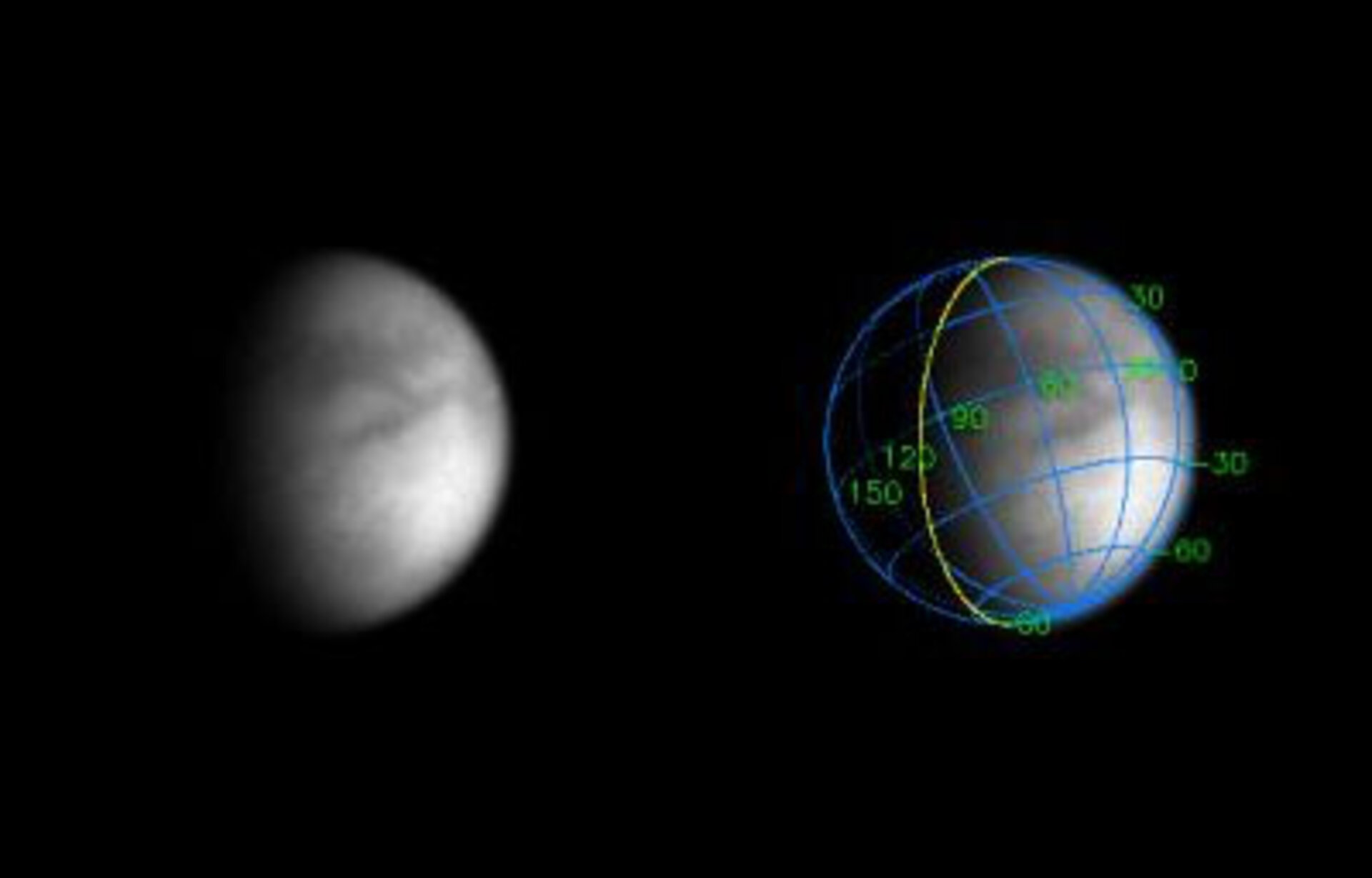Detail visible through the haze
Irregular bright and dark regions of yet unidentified composition and character are becoming increasingly visible on Titan's surface as Cassini-Huygens approaches its first fly-by of Saturn's largest moon on 2 July 2004.
This view represents an improvement in resolution of nearly three times over the previous Cassini-Huygens images of Titan. Titan's surface is difficult to study, veiled by a dense hydrocarbon haze that forms in the stratosphere as methane is destroyed by sunlight.
This image is different from previous Titan images because it was taken through a special filter, called a 'polariser', which is designed to 'see through' the atmosphere to the surface. This is similar to the way a polarising filter on the lens of a hand-held camera on Earth makes distant objects clearer.
The observed brightness variations are real, on scales of one hundred kilometres or less. The image was obtained through a polariser in the near-infrared (centred at 938 nanometres). The combination was designed to reduce the obscuration by atmospheric haze.
The haze is more transparent at 938 nanometres than at shorter wavelengths, and light at this wavelength is not absorbed by methane gas in Titan's atmosphere. Because the polariser blocks out light scattered mainly by the haze, light at this wavelength consequently is a sample from the surface.
The Cassini-Huygens mission is a co-operative project of NASA, ESA and ASI, the Italian space agency.
Credits: NASA/JPL/Space Science Institute








